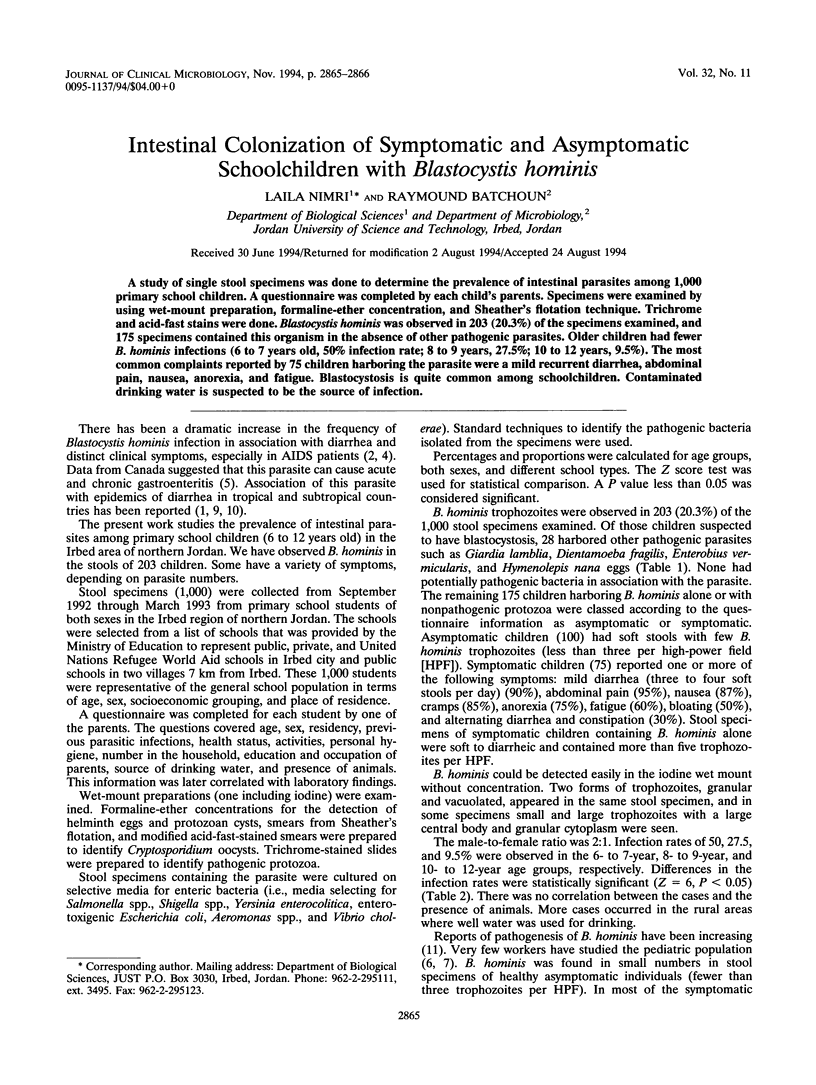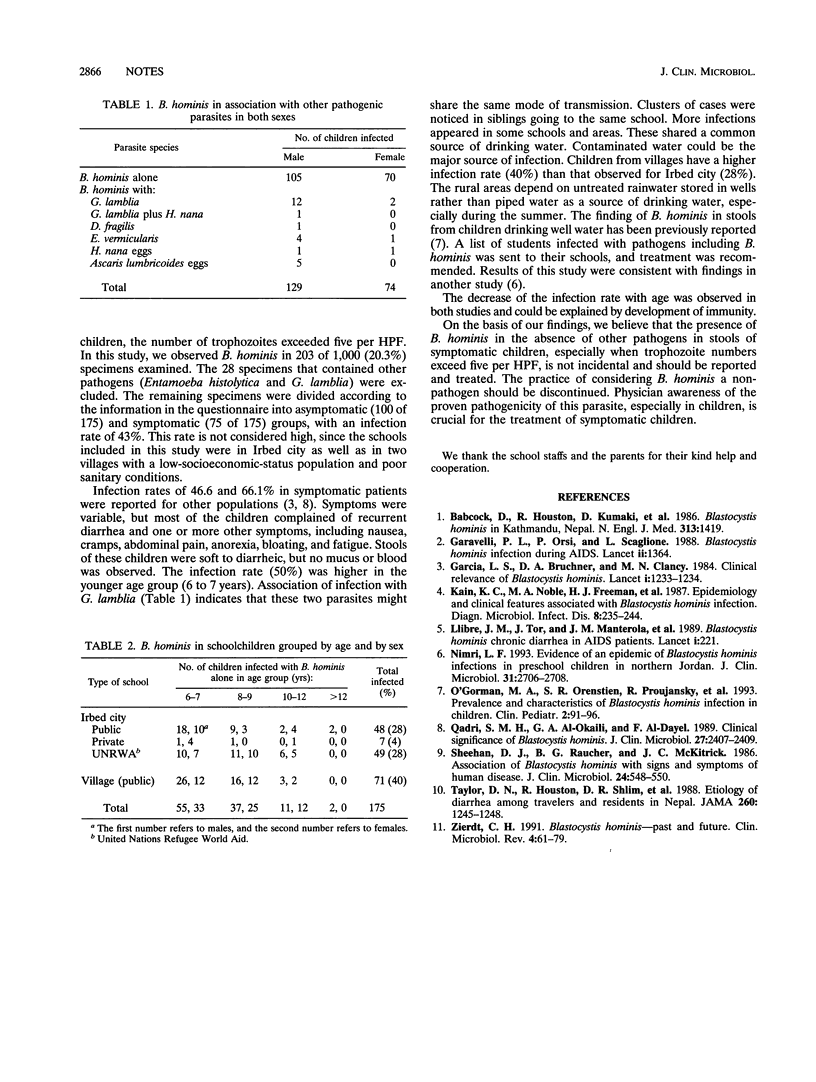Abstract
A study of single stool specimens was done to determine the prevalence of intestinal parasites among 1,000 primary school children. A questionnaire was completed by each child's parents. Specimens were examined by using wet-mount preparation, formaline-ether concentration, and Sheather's flotation technique. Trichrome and acid-fast stains were done. Blastocystis hominis was observed in 203 (20.3%) of the specimens examined, and 175 specimens contained this organism in the absence of other pathogenic parasites. Older children had fewer B. hominis infections (6 to 7 years old, 50% infection rate; 8 to 9 years, 27.5%; 10 to 12 years, 9.5%). The most common complaints reported by 75 children harboring the parasite were a mild recurrent diarrhea, abdominal pain, nausea, anorexia, and fatigue. Blastocystosis is quite common among schoolchildren. Contaminated drinking water is suspected to be the source of infection.
Full text
PDF

Selected References
These references are in PubMed. This may not be the complete list of references from this article.
- Babcock D., Houston R., Kumaki D., Shlim D. Blastocystis hominis in Kathmandu, Nepal. N Engl J Med. 1985 Nov 28;313(22):1419–1419. [PubMed] [Google Scholar]
- Clinical relevance of Blastocystis hominis. Lancet. 1984 Jun 2;1(8388):1233–1234. [PubMed] [Google Scholar]
- Garavelli P. L., Orsi P., Scaglione L. Blastocystis hominis infection during AIDS. Lancet. 1988 Dec 10;2(8624):1364–1364. doi: 10.1016/s0140-6736(88)90896-3. [DOI] [PubMed] [Google Scholar]
- Kain K. C., Noble M. A., Freeman H. J., Barteluk R. L. Epidemiology and clinical features associated with Blastocystis hominis infection. Diagn Microbiol Infect Dis. 1987 Dec;8(4):235–244. doi: 10.1016/0732-8893(87)90055-1. [DOI] [PubMed] [Google Scholar]
- Llibre J. M., Tor J., Manterola J. M., Carbonell C., Foz M. Blastocystis hominis chronic diarrhoea in AIDS patients. Lancet. 1989 Jan 28;1(8631):221–221. doi: 10.1016/s0140-6736(89)91239-7. [DOI] [PubMed] [Google Scholar]
- Nimri L. F. Evidence of an epidemic of Blastocystis hominis infections in preschool children in northern Jordan. J Clin Microbiol. 1993 Oct;31(10):2706–2708. doi: 10.1128/jcm.31.10.2706-2708.1993. [DOI] [PMC free article] [PubMed] [Google Scholar]
- O'Gorman M. A., Orenstein S. R., Proujansky R., Wadowsky R. M., Putnam P. E., Kocoshis S. A. Prevalence and characteristics of Blastocystis hominis infection in children. Clin Pediatr (Phila) 1993 Feb;32(2):91–96. doi: 10.1177/000992289303200206. [DOI] [PubMed] [Google Scholar]
- Qadri S. M., al-Okaili G. A., al-Dayel F. Clinical significance of Blastocystis hominis. J Clin Microbiol. 1989 Nov;27(11):2407–2409. doi: 10.1128/jcm.27.11.2407-2409.1989. [DOI] [PMC free article] [PubMed] [Google Scholar]
- Sheehan D. J., Raucher B. G., McKitrick J. C. Association of Blastocystis hominis with signs and symptoms of human disease. J Clin Microbiol. 1986 Oct;24(4):548–550. doi: 10.1128/jcm.24.4.548-550.1986. [DOI] [PMC free article] [PubMed] [Google Scholar]
- Taylor D. N., Houston R., Shlim D. R., Bhaibulaya M., Ungar B. L., Echeverria P. Etiology of diarrhea among travelers and foreign residents in Nepal. JAMA. 1988 Sep 2;260(9):1245–1248. [PubMed] [Google Scholar]
- Zierdt C. H. Blastocystis hominis--past and future. Clin Microbiol Rev. 1991 Jan;4(1):61–79. doi: 10.1128/cmr.4.1.61. [DOI] [PMC free article] [PubMed] [Google Scholar]


